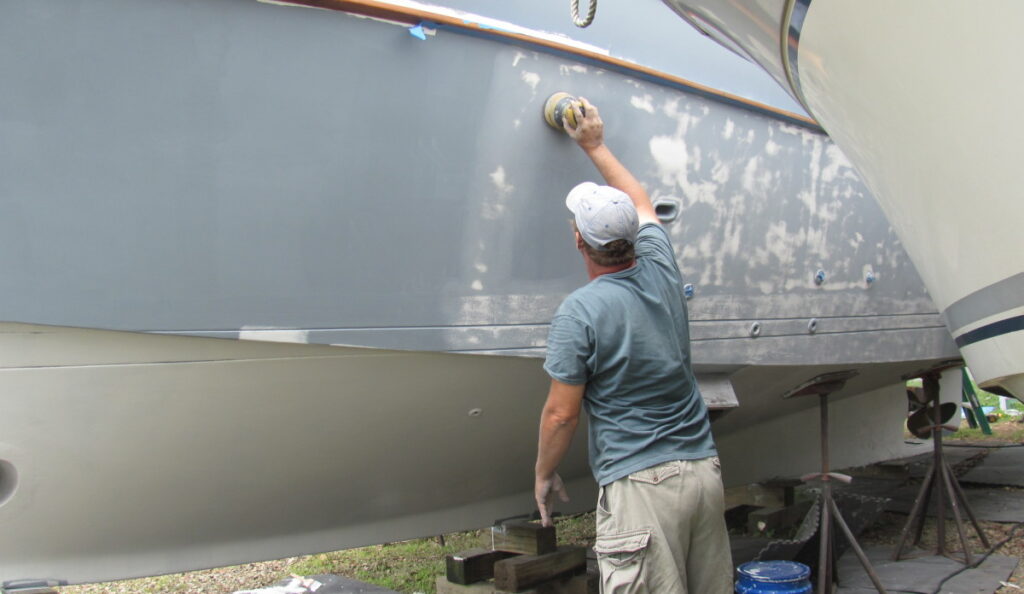How to Paint Boat
It Feels Like Home!

How to Paint Boat Bottom of a Fiberglass Boat
How to Paint Boat Bottom of a Fiberglass Boat is essential for protecting it from the harsh marine environment and preventing the growth of algae and barnacles. Whether you’re a seasoned boater or a first-time DIY enthusiast, following these steps will help you achieve a professional finish and ensure your boat stays in top condition.
Materials and Tools Needed
Materials:
- Marine bottom paint (antifouling paint)
- Primer (if needed)
- Epoxy filler (for repairs)
- Paint thinner (as recommended by paint manufacturer)
- Masking tape
- Drop cloths or plastic sheeting
Tools:
- Sandpaper (80-grit and 120-grit)
- Paint rollers and brushes
- Paint trays
- Safety gear (gloves, goggles, and respirator mask)
- Putty knife (for applying filler)
- Power sander (optional)
- Boat jack stands or a lift
Step-by-Step Instructions
1. Safety First:
- Ensure you are working in a well-ventilated area or outside.
- Wear appropriate safety gear, including gloves, goggles, and a respirator mask to protect against dust and fumes.
2. Prepare the Work Area:
- Lift the boat using a boat lift or place it securely on jack stands. Make sure it is stable and level.
- Spread drop cloths or plastic sheeting under the boat to catch any debris and paint drips.
3. Clean the Boat Bottom:
- Thoroughly clean the bottom of the boat with a pressure washer or a hose and scrub brush to remove dirt, grime, and marine growth.
- Allow the surface to dry completely before proceeding.
4. Sand the Surface:
- Use 80-grit sandpaper to sand the entire bottom of the boat. This will help the new paint adhere better.
- If there are any old layers of paint or rough spots, a power sander can make the job easier.
- Once the surface is smooth, switch to 120-grit sandpaper for a final sanding.
5. Repair Any Damage:
- Inspect the bottom of the boat for any cracks, gouges, or other damage.
- Use epoxy filler to repair any imperfections. Apply the filler with a putty knife and smooth it out. Allow it to cure according to the manufacturer’s instructions.
- Sand the repaired areas smooth once the filler has cured.
6. Mask Off Areas:
- Use masking tape to protect areas that you do not want to paint, such as the waterline, through-hull fittings, and transducers.
7. Apply Primer (if needed):
- If the manufacturer of your bottom paint recommends a primer, apply it according to the instructions on the can.
- Use a roller for large areas and a brush for edges and hard-to-reach spots.
- Allow the primer to dry completely before painting.
8. Apply Bottom Paint:
- Stir the bottom paint thoroughly before and during application to ensure an even consistency.
- Pour the paint into a paint tray and use a roller to apply it to the bottom of the boat. Use a brush for edges and detail work.
- Apply the paint in thin, even coats, following the manufacturer’s recommended coverage and drying times.
- Depending on the type of paint, you may need to apply multiple coats. Follow the drying times between coats as specified by the manufacturer.
9. Inspect and Touch Up:
- After the final coat has dried, inspect the entire surface for any missed spots or uneven areas. Touch up as needed.
10. Remove Masking Tape and Clean Up:
- Carefully remove the masking tape while the last coat of paint is still slightly tacky to avoid peeling.
- Clean up any drips or spills immediately with paint thinner.
How to Paint Boat Bottom of a Fiberglass Boat is a crucial maintenance task that helps protect your vessel and improve its performance. By following these detailed steps, you can achieve a professional-quality finish and ensure your boat remains in great condition for your adventures on the water. Regular maintenance and repainting will extend the life of your boat and keep it looking and performing its best.
